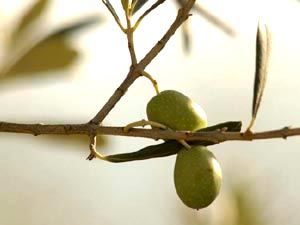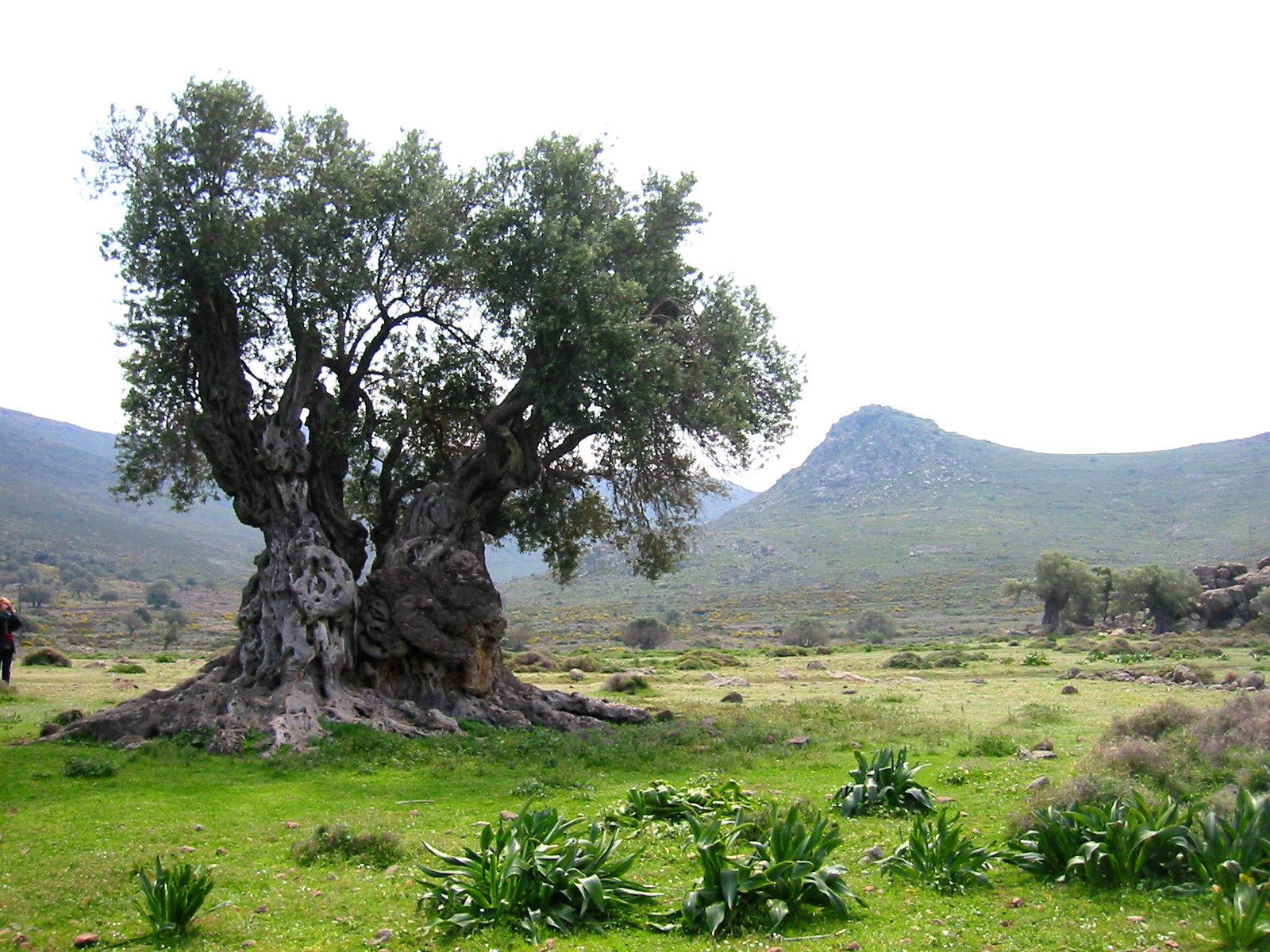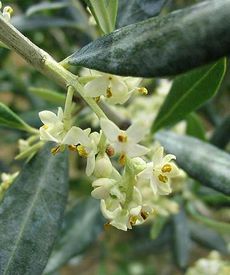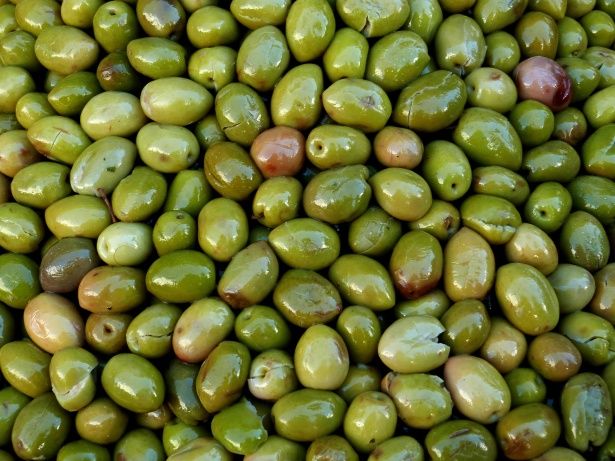Olive
.jpg)

Scientific name: Olea europaea
Family: Oleaceae
Height: over 40 ft. (12 m)
Sun exposure: full sun
Bloom time: mid summer
Bloom color: white/near white
Origins: Africa, Asia, around the Mediterranean
Description
Olive tree is admired for its soft grey-green foliage, blending well with other colours in the garden. The attractive smooth grey trunks and branches take on a gnarled, twisted look when this tree reaches maturity. They produce clusters of fluffy white flowers in early Summer followed by green olives which blacken and drop from the tree during late Autumn/Winter. Olives are very and not usually bothered by pests or diseases.
Plant - Olives are large, evergreen shrubs in their native state, but are trained as stout trees on massive trunks, especially in older plantings. Most trees have round, spreading crowns, but tall, cylindrical trees are grown in some parts of Europe. Trees in neglected groves grow almost imperceptibly slow, whereas irrigated trees in California may reach 12' in 4 years. Olives have the longest-lived trees of any fruit crop; some trees in Europe are claimed to be 1000 years old.
Leaves are small (1.5" long, 1/4-1/2" wide), linear, with entire margins and acute tips, silver-green in color, and fairly thick. Leaf arrangement is opposite, as for all members of the Oleaceae. Leaves live about 2 years.
Flower - Small, off-white flowers are borne in racemose panicles of 15-30 flowers in axils of 1-yr-old wood. Most flowers are staminate by pistil abortion, leaving only 1-2 perfect flowers per inflorescence, which may set fruit. The ovary is superior, and there are 4 sepals and petals, and 2 stamens. Flowering occurs rather late relative to other tree crops - May in California.
Fruit. The fruit type is a drupe. Fruit are oblong with smooth, waxy surfaces. Color is green when immature, turning yellow-green in autumn, with red, purple, or black coloration at full maturity. Dark coloration results from anthocyanin production in the exocarp and mesocarp. A stony pit surrounds a single seed. Olives require 6-8 months for full maturation, but table olives are harvested earlier when firm, and oil olives are left on trees until oil content reaches 20-30% (early winter).
Trees produced vegetatively may flower in 2-3 years, produce significant crops in 4 years, and reach full production in about 7-8 years. Seedling trees have a long juvenile period, and take up to 10 years to reach full cropping. Olives have a tendency toward heavy alternate bearing unless they are pruned annually and thinned in the "on" year. Olives can be thinned chemically with NAA applied at about 150 ppm 2 weeks after full bloom. However, chemical thinning requires great managerial skill, is cultivar-dependent, and subject to erratic response due to weather conditions.
|
|
|
Care and cultivation
Slow growing - eventually reaching 25 to 30 feet. The Olive is not only grown for its beauty but of course, for its very distinctive culinary fruit and oil.
Olive trees require full sun. They are most lush when growing in deep, rich soil, but will also grow in shallow, alkaline or stony soil with a little fertiliser. They thrive in areas hot and dry and also perform excellently in coastal areas. they will grow in a wide range of soils as long as its well drained. Trees survive and fruit well even with considerable neglect. When planting Olives a slow release fertiliser will give a great start. A side dressing of Sheep pellets and general garden fertiliser will aid in increased vigour and fruiting.
Olives are grown on a wide variety of soils, many too poor to support cultivation of other crops. They are tolerant of high pH, salinity, excess boron, and drought, but will die in a few weeks if flooded.
Olives are supremely adapted to Mediterranean climates, and cannot tolerate high humidity due to disease and physiological disorders. Fluctuations in humidity and temperature 1-3 months following fruit set cause a condition known as aseptic apical decay on fruits. Part of the fruit surface turns black, and the fruit usually abscises; even in Mediterranean climates, losses may reach 30%.
Chilling requirement varies among cultivars; those grown in California have relatively high requirements (1000 hr). Cultivars grown in northern Africa fruit well with only a few hundred hours of chilling. Some texts erroneously refer to the chilling requirement as "vernalization", since flowers develop during or following (as opposed to before) the cold period. However, floral induction is known to occur in November prior to flowering, so olives are chilled, not vernalized. Cold hardiness may approach 5-15 degrees F in midwinter when fully acclimated, but foliage and fruit are damaged by frost during active growth.

Container Planting - Olives grow exceptionally well in pots too. Remember to put some scoria in the bottom of the pot to keep it free draining. Patio and Tub mix is a great medium to plant in, however any good quality potting mix will do. They are also well suited for espalier or topiary work.
Pruning Methods - Olives are not usually thinned, but if crops are exceptionally heavy, fruit will be quite small. For the largest olives possible, you can increase fruit size by thinning. This should be done as soon as possible after fruit set. Thin until remaining fruit average about 2 to 3 per foot of twig.
Fruit drop is a problem if olives are grown only for ornamental purposes.
Propagation
Cuttings - The ease of vegetative propagation of the olive undoubtedly contributed to its early domestication and use by man. Worldwide, rooting of cuttings is the most popular method of olive propagation. Unusually large cuttings will root: in Spain, cuttings with diameters up to 6-12" are used to establish new plantings. They are pruned heavily and mounded with soil throughout winter, and rooting takes place prior to summer heat. More commonly, hardwood cuttings are made from 3-4 year-old wood taken in mid-winter. Leaves are striped off completely, and cuttings are rooted over the course a several months. Bottom heat and growth regulator dips improve rooting.
Suckers - Suckers are simply shoots that arise from the trunk or roots, and thus are similar to a naturally rooted cutting. They can be removed and planted directly if well-rooted, or treated as a softwood cutting if the root system is poor.
Pests and diseases
Olives are very and not usually bothered by pests or diseases.
Info
- Olives are some of the longest lived trees in the world.
Articole asemănătoare
-
Putregaiul cenusiu
(Botrytis vinerea) Ca urmare a bolii, constatam o inmuiere a tesuturilor, care se acopera cu un mucegai-cenusiu. Apar pete brune...
-
Greens Pasta
Ingredients: 21 cups pasta 1 red bell pepper 1 green onion...

